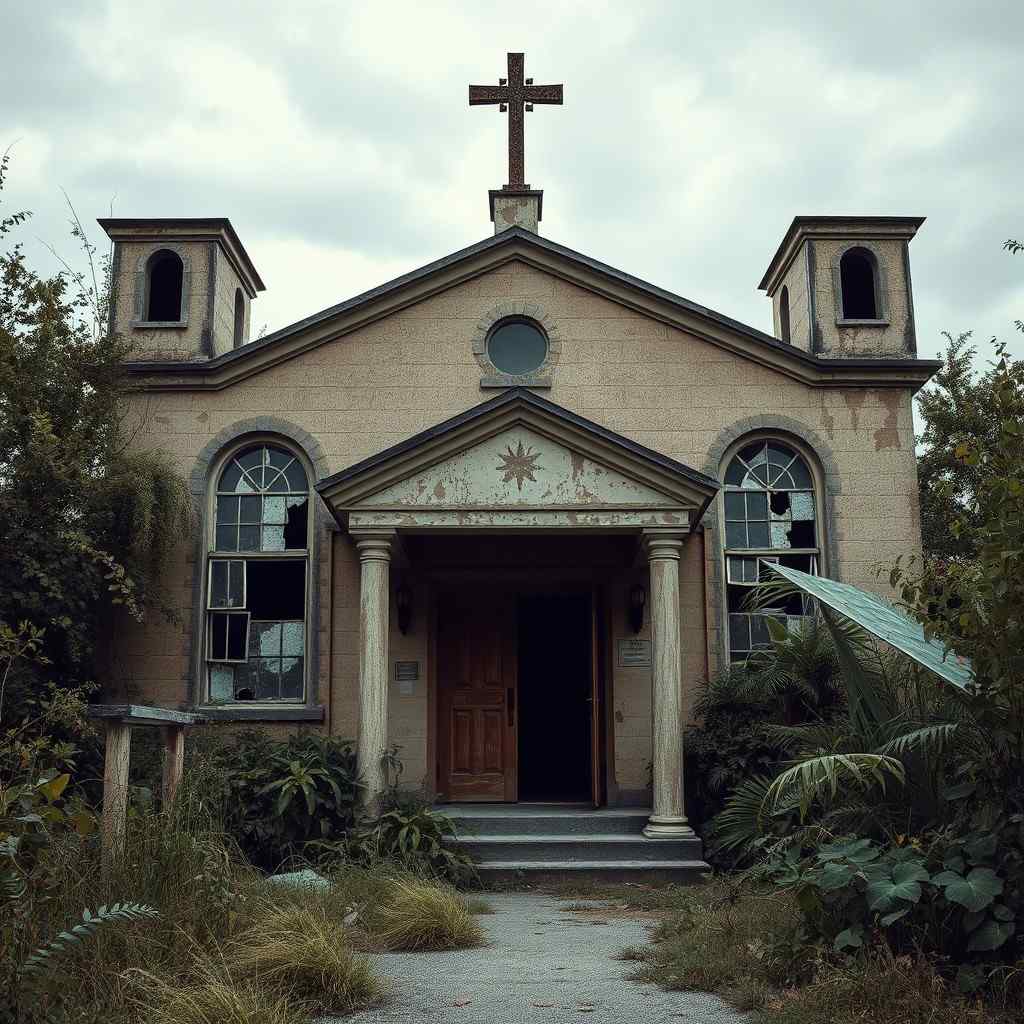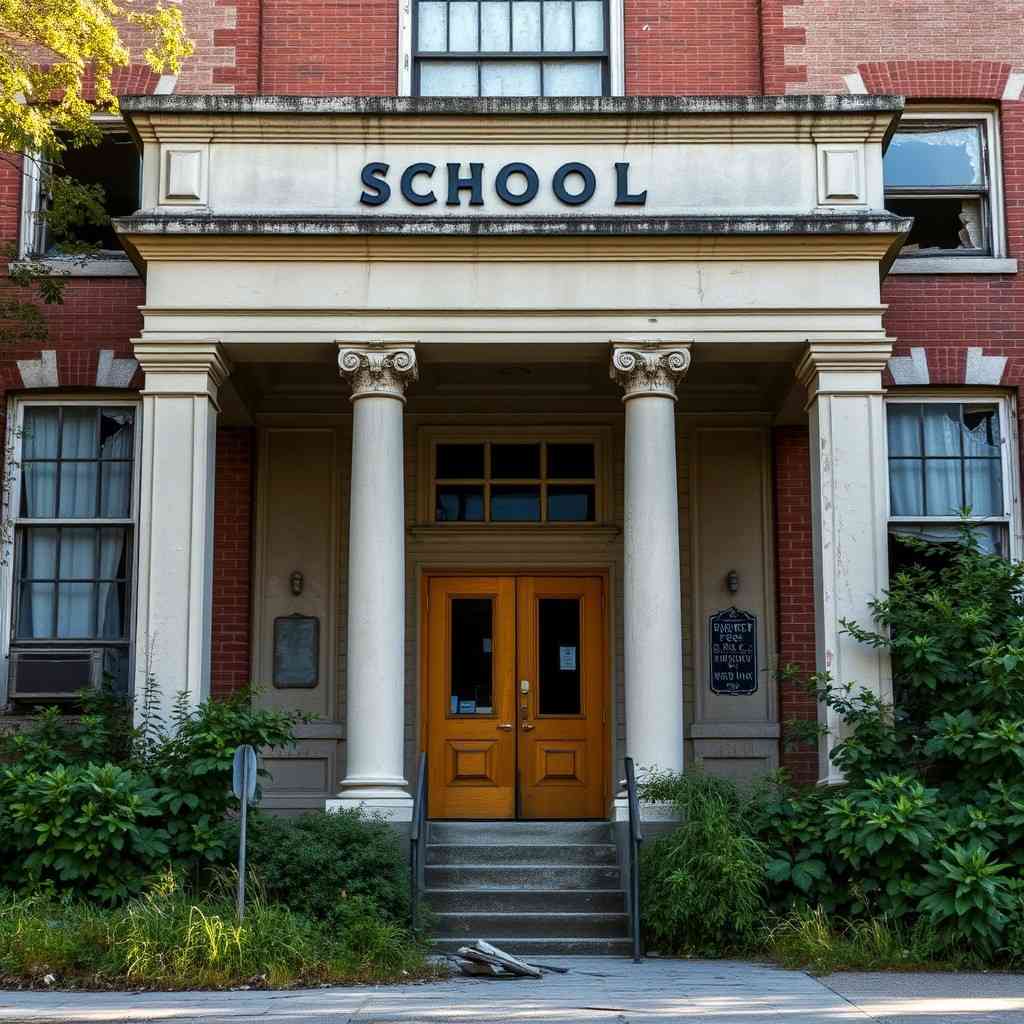The American Midwest holds secrets within its rolling plains and dense forests – ancient stone walls that once echoed with centuries of prayer, now standing silent against the prairie wind. These abandoned monasteries represent more than just crumbling architecture; they embody the spiritual history of a region that witnessed waves of religious migration, economic upheaval, and cultural transformation.
From the windswept hills of Wisconsin to the river valleys of Missouri, dozens of monastic communities once flourished across the heartland. Today, their remnants tell compelling stories of faith, perseverance, and ultimate abandonment that continue to fascinate historians, urban explorers, and spiritual seekers alike.
The Golden Age of Midwestern Monasticism
The establishment of monasteries in the Midwest began in earnest during the mid-19th century, as waves of European immigrants brought their religious traditions to the expanding American frontier. German Benedictines, Irish Cistercians, and French Trappists all established communities across the region, seeking isolation and fertile land for their contemplative way of life.
These religious communities weren’t merely places of worship – they were complete ecosystems. Monasteries operated farms, breweries, schools, and workshops. They preserved ancient traditions of manuscript copying, maintained libraries, and served as centers of learning in otherwise isolated rural areas. The monks and nuns who inhabited these spaces followed strict schedules of prayer, work, and study that had remained unchanged for centuries.
The peak period for Midwestern monasticism occurred between 1850 and 1920, when religious communities enjoyed both stability and growth. Many monasteries became largely self-sufficient, producing everything from bread and beer to handcrafted furniture and religious artifacts. This golden age would not last forever, as changing social conditions and declining vocations would eventually lead to the abandonment of many of these sacred spaces.


Notable Abandoned Monasteries Across the Midwest
The Ruins of St. Joseph’s Abbey, Missouri
Deep in the Missouri Ozarks, the skeletal remains of St. Joseph’s Abbey stand as perhaps the most photographed abandoned monastery in the Midwest. Founded in 1873 by Trappist monks seeking isolation in the American wilderness, the abbey once housed over 200 religious brothers who maintained a completely silent existence.
The monastery’s Gothic Revival architecture, constructed entirely from local limestone, created an imposing presence against the forested hillsides. The complex included a massive church, dormitories, workshops, and a renowned brewery that produced beer sold throughout the region. The abbey’s library contained over 10,000 volumes, including rare medieval manuscripts brought from European monasteries.
Economic pressures during the Great Depression, combined with declining religious vocations, forced the gradual abandonment of St. Joseph’s. The last monks departed in 1944, leaving behind a complex that nature has slowly reclaimed. Today, ivy crawls up the limestone walls, and wildlife has made homes in the former cells where monks once spent their lives in contemplation.
The Abandoned Convent of Sacred Heart, Wisconsin
In the dairy country of central Wisconsin, the abandoned Convent of Sacred Heart presents a different but equally compelling story. This former home to the Sisters of Divine Providence was established in 1889 to serve the educational needs of German Catholic immigrants settling in the region.
The four-story brick building, designed in the Second Empire style popular in the late 19th century, once housed over 150 nuns who operated a boarding school for girls. The sisters were known throughout the region for their educational excellence and their commitment to preserving German Catholic traditions in the New World.
The convent’s decline began in the 1960s following the Second Vatican Council, which encouraged modernization within religious communities. Many younger nuns left religious life, and changing educational patterns reduced demand for boarding schools. The last sisters departed in 1978, leaving behind a building filled with artifacts from nearly a century of religious life.
The Forgotten Franciscan Friary, Illinois


Hidden among the cornfields of central Illinois, the ruins of a Franciscan friary offer glimpses into the contemplative life that once flourished on the prairie. Established in 1902 by German Franciscans, this modest complex never grew as large as other Midwestern monasteries but maintained a reputation for intense spiritual devotion.
The friars specialized in manuscript illumination and maintained one of the region’s most significant collections of religious art. Their chapel, though small, contained stained glass windows created by European craftsmen and brought to Illinois at considerable expense. The community also operated a small farm and apiary, selling honey and vegetables to support their contemplative lifestyle.
World War I brought particular challenges to this German community, as anti-German sentiment made their position increasingly difficult. Declining membership throughout the 1920s and 1930s eventually forced closure in 1941. The buildings stood empty for decades before being partially demolished, leaving only foundation stones and the chapel’s bell tower as witnesses to their former purpose.
Architectural Significance and Design Elements
The abandoned monasteries of the Midwest showcase a fascinating blend of European religious architecture adapted to American conditions and materials. Most were constructed using local stone, brick, and timber, creating structures that harmonized with their natural surroundings while maintaining the sacred geometry essential to monastic life.
Gothic Revival elements appear frequently in these buildings, with pointed arches, ribbed vaults, and flying buttresses creating spaces designed to lift the spirit heavenward. The use of natural light was particularly important, with carefully placed windows creating patterns of illumination that changed throughout the day to complement the rhythm of monastic prayer.
Many Midwestern monasteries incorporated innovative features for their time, including early central heating systems, sophisticated plumbing, and well-designed acoustics that allowed chanted prayers to resonate throughout chapel spaces. The integration of working areas – kitchens, workshops, libraries, and dormitories – followed centuries-old patterns that maximized both efficiency and spiritual significance.
The deterioration of these structures has revealed construction techniques and materials that speak to both the permanence intended by their builders and the reality of temporal change. Exposed timber framing shows the quality of craftsmanship, while crumbling stonework demonstrates how even the most solidly built structures eventually yield to time and weather.
The Decline and Abandonment
Understanding why these once-thriving communities were abandoned requires examining the complex social, economic, and religious changes that swept across America throughout the 20th century. The decline was rarely sudden; instead, it represented a gradual erosion of the conditions that had made monastic life attractive and sustainable.
The two World Wars had profound impacts on many religious communities, particularly those with strong European connections. Anti-German sentiment during World War I affected several Midwestern monasteries, while World War II disrupted international connections and reduced the flow of new members from Europe.
The Second Vatican Council (1962-1965) encouraged modernization within the Catholic Church, leading many religious communities to question traditional practices and structures. While some communities successfully adapted, others found their membership declining as younger people were drawn to more contemporary forms of religious expression.
Economic factors also played crucial roles in abandonment decisions. Many monasteries had depended on agricultural income, but mechanization and changing market conditions made small-scale farming less viable. The maintenance costs for large, aging buildings became increasingly difficult to manage with shrinking communities and reduced income.
Social changes in American society also contributed to decline. The growth of suburban communities, improved transportation, and changing educational patterns reduced demand for the services that many monasteries had traditionally provided. Boarding schools closed, retreat programs ended, and the isolation that had once been seen as spiritually beneficial began to seem like a barrier to effective ministry.


Current State and Preservation Efforts
Today, these abandoned monasteries exist in various states of preservation and decay. Some have been completely demolished, leaving only foundations and memories. Others stand as picturesque ruins, their Gothic arches framing views of prairie sky. A fortunate few have been preserved through the efforts of historical societies, private owners, or religious organizations.
Preservation efforts face significant challenges, including the enormous costs associated with maintaining large, complex buildings without steady income streams. Many of these structures were built for specific religious purposes, making adaptive reuse difficult without compromising their architectural integrity.
Some abandoned monasteries have found new life as retreat centers, conference facilities, or museums. These adaptations allow the buildings to serve contemporary needs while preserving their historical significance. However, the contemplative atmosphere that was central to their original purpose often proves difficult to maintain in more public settings.
Weather represents the greatest ongoing threat to these structures. Midwestern winters are particularly harsh on buildings that lack consistent heating and maintenance. Water damage from failed roofing, broken windows, and inadequate drainage systems accelerates deterioration and can quickly transform salvageable buildings into dangerous ruins.
Photography and Urban Exploration
The abandoned monasteries of the Midwest have become popular subjects for photographers and urban explorers drawn to their combination of architectural beauty, historical significance, and melancholy atmosphere. These locations offer unique opportunities to document the intersection of human aspiration and temporal decay.
Photography in these locations presents both artistic opportunities and ethical responsibilities. The play of light through broken windows, the texture of weathered stone, and the contrast between human-made structures and encroaching nature create compelling visual narratives. However, photographers must balance their artistic goals with respect for the sacred history of these places and concern for safety.
Urban exploration of abandoned monasteries requires particular sensitivity, as these sites often contain artifacts of religious significance and personal belongings left behind by their former inhabitants. Responsible exploration emphasizes documentation rather than collection, leaving sites undisturbed for future visitors and researchers.
Safety considerations are paramount when exploring these deteriorating structures. Weakened floors, unstable walls, and hazardous materials require careful assessment before entry. Many sites are on private property, making permission essential before visiting.


Impact on Local Communities
The abandonment of monasteries had profound impacts on the local communities that had grown up around them. These religious institutions had often served as economic anchors, providing employment, purchasing goods and services, and attracting visitors to otherwise isolated rural areas.
Many small towns experienced significant economic disruption when their local monastery closed. The loss of jobs, reduced commercial activity, and decreased property values created challenges that some communities never fully overcame. The psychological impact was equally significant, as these institutions had often served as sources of community identity and pride.
Some communities have worked to preserve the memory and legacy of their abandoned monasteries through historical societies, museums, and annual commemorative events. These efforts help maintain connections to local history while potentially generating tourism revenue.
The empty buildings themselves often became focal points for community debate about preservation, demolition, or adaptive reuse. These discussions reflected broader questions about how communities balance historical preservation with practical needs and financial constraints.
Spiritual and Cultural Legacy
Despite their abandonment, these monasteries continue to exert spiritual and cultural influence that extends far beyond their physical boundaries. The traditions of prayer, contemplation, and service that characterized these communities left lasting marks on the regions where they flourished.
Many former monastery sites continue to attract visitors seeking spiritual experiences, quiet reflection, or connections to historical traditions. The contemplative atmosphere that characterized these places during their active years often persists, creating spaces that feel set apart from the ordinary world.
The educational contributions of these institutions also created lasting legacies. Schools, libraries, and cultural programs established by monastic communities often outlasted the communities themselves, continuing to serve local populations long after the original institutions closed.
The preservation of traditional crafts, agricultural techniques, and cultural practices by monastic communities contributed to the cultural richness of the Midwest. Many communities maintained Old World traditions that might otherwise have been lost in the process of American assimilation.
Archaeological Significance
Abandoned monasteries represent important archaeological resources that can provide insights into religious life, material culture, and social organization in 19th and early 20th-century America. These sites often contain well-preserved artifacts, building foundations, and landscape features that document centuries of human activity.
Archaeological investigations at former monastery sites have revealed information about daily life in religious communities, including dietary practices, craft production, and economic activities. The stratified nature of many sites, with periods of construction, modification, and abandonment, provides opportunities to study change over time.
The preservation of organic materials in some monastery sites, particularly in basements and other protected areas, has yielded unusual insights into historical material culture. Textiles, wooden objects, and paper documents that would normally decay have sometimes survived in these controlled environments.
The integration of documentary evidence with archaeological findings at monastery sites creates opportunities for particularly rich historical interpretation. The detailed records maintained by many religious communities can be correlated with physical evidence to create comprehensive pictures of past life.
Tourism and Economic Development
Abandoned monasteries have emerged as important cultural tourism destinations, attracting visitors interested in history, architecture, and spiritual themes. This tourism potential represents opportunities for economic development in rural areas that may have few other attractions.
Successful tourism development around abandoned monasteries requires careful balance between public access and preservation needs. Uncontrolled visitation can accelerate deterioration, while overly restrictive access limits economic benefits and public education opportunities.
Some communities have developed comprehensive heritage tourism programs that include multiple historical sites, creating circuits that can support overnight visits and extended economic impact. These programs often combine monastery ruins with other historical attractions, natural areas, and cultural events.
The marketing of monastery tourism requires sensitivity to the religious significance of these sites while appealing to diverse visitor interests. Successful programs often emphasize the historical, architectural, and cultural aspects of these sites while respecting their spiritual heritage.


Future Prospects and Challenges
The future of abandoned monasteries in the Midwest depends on complex interactions between preservation costs, community support, tourism potential, and cultural values. Climate change presents additional challenges, as more extreme weather events threaten already vulnerable structures.
Innovative approaches to preservation and adaptive reuse continue to emerge, including partnerships between religious organizations, historical societies, and private developers. These collaborations can sometimes provide the resources necessary for preservation while creating sustainable uses for preserved buildings.
Digital documentation technologies offer new possibilities for preserving the memory and significance of these sites even when physical preservation proves impossible. Three-dimensional scanning, virtual reality experiences, and comprehensive photographic documentation can capture details that might otherwise be lost.
The growing interest in contemplative spirituality and historical tourism suggests that there may be increasing public support for preservation efforts. However, this support must be translated into practical resources and sustainable management strategies.
Frequently Asked Questions (FAQs)
What led to the abandonment of monasteries in the Midwest?
The abandonment of Midwestern monasteries resulted from multiple interconnected factors spanning several decades. The primary causes included declining religious vocations following the Second Vatican Council, economic pressures from maintaining large, aging buildings with smaller communities, and changing social conditions that reduced demand for traditional monastic services. World Wars I and II also significantly impacted communities with European connections, while modernization of agriculture and education reduced the economic viability of many monastery operations.
Are there any abandoned monasteries that can still be visited safely?
Several former monastery sites in the Midwest remain accessible to visitors, though conditions vary significantly. Some have been converted into retreat centers, museums, or historical sites with proper maintenance and safety measures. However, many truly abandoned sites pose serious safety risks due to structural deterioration and should only be approached by experienced urban explorers with proper equipment and permissions. Always verify current ownership, obtain necessary permissions, and prioritize safety when considering visits to any abandoned religious site.
What is the most famous abandoned monastery in the Midwest?
St. Joseph’s Abbey in Missouri is generally considered the most notable abandoned monastery in the region due to its impressive Gothic Revival architecture, well-documented history, and photogenic ruins. The Trappist abbey operated from 1873 to 1944 and housed over 200 monks at its peak. Its limestone structures, partially collapsed but still imposing, have become iconic representations of Midwestern monastic heritage and attract photographers, historians, and spiritual seekers from across the country.
How can I find information about abandoned monasteries near me?
Research abandoned monasteries through multiple sources including local historical societies, diocesan archives, university libraries with regional collections, and state historical preservation offices. Online databases, historical maps, and genealogical resources often contain monastery information. Local libraries frequently maintain vertical files on religious institutions, while older residents may have personal knowledge of former communities. Academic researchers studying religious history can also provide valuable insights into specific locations and their histories.
What should I do if I discover artifacts at an abandoned monastery site?
Any artifacts discovered at abandoned monastery sites should be left undisturbed and reported to appropriate authorities. These items may have historical, cultural, or religious significance requiring professional handling. Contact local historical societies, state archaeologists, or diocesan offices for guidance. Many artifacts in these locations may still be owned by religious organizations even after site abandonment. Removing items without permission constitutes theft and destroys important historical context that researchers need for proper interpretation.
Are there any plans to restore abandoned monasteries in the Midwest?
Several restoration and preservation projects are ongoing or planned across the region, though each faces unique challenges related to funding, structural condition, and intended use. Some projects focus on stabilizing ruins to prevent further deterioration, while others aim for complete restoration and adaptive reuse. Success often depends on community support, available funding, and the structural condition of remaining buildings. Organizations like the National Trust for Historic Preservation and state historical societies sometimes provide assistance for viable preservation projects.
How do I get permission to photograph abandoned monastery sites?
Photographing abandoned monasteries requires researching current ownership and obtaining proper permissions. Many sites remain on private property despite abandonment, requiring landowner consent. Some properties are owned by dioceses, religious orders, or historical organizations with specific policies regarding access. Contact local authorities, property records offices, or historical societies to identify current owners. Always respect private property rights, and be prepared to provide information about your intended use of photographs, especially for commercial purposes.
What is the historical significance of Midwest monasteries?
Midwestern monasteries played crucial roles in regional development, serving as centers of education, agriculture, and cultural preservation during the 19th and early 20th centuries. These institutions preserved European religious traditions while adapting to American frontier conditions. They contributed significantly to local economies, operated schools and hospitals, maintained libraries, and preserved traditional crafts and farming techniques. Their abandonment marks important transitions in American religious life, rural economics, and cultural patterns that continue to influence regional identity.
Can abandoned monastery buildings be legally purchased?
Some abandoned monastery properties do become available for purchase, though the process varies depending on current ownership and local regulations. Properties owned by religious organizations may have restrictions on use or resale priorities. Historical designation can limit renovation options and require special permits for modifications. Potential buyers should thoroughly research ownership history, outstanding liens, structural conditions, and local zoning requirements. Professional legal and architectural consultation is essential before considering purchase of any abandoned religious property.
What dangers exist when exploring abandoned monasteries?
Abandoned monasteries present multiple safety hazards including structural instability, deteriorated flooring, weakened stairs, falling debris, and hazardous materials like asbestos or lead paint. Environmental dangers include wildlife habitation, poisonous plants, hidden holes, and unstable ground conditions. Legal risks include trespassing charges and liability for injuries on private property. Weather can create additional hazards through ice, flooding, or extreme temperatures. Proper safety equipment, emergency planning, and companion exploration are essential. Many sites are better appreciated through organized tours or from exterior viewing positions.
How do weather and climate affect abandoned monastery preservation?
Midwestern weather patterns pose severe challenges for abandoned monastery preservation. Freeze-thaw cycles cause masonry deterioration and foundation shifting. Heavy snow loads stress weakened roof structures, while ice dams create water infiltration problems. Summer storms can damage exposed areas, and high humidity promotes mold and rot in organic materials. Wind erosion affects both stone and mortar joints. Climate change is intensifying these challenges through more extreme weather events. Effective preservation requires addressing drainage, structural stability, and weather protection as immediate priorities.
Are there any ghost stories or legends associated with abandoned Midwest monasteries?
Many abandoned monasteries have accumulated ghost stories and legends reflecting their spiritual history and mysterious abandonment. Common tales include sightings of robed figures walking former chapel areas, unexplained lights in empty buildings, and sounds of chanting or bells from inactive locations. These stories often reflect the deep spiritual associations people maintain with these sites even after abandonment. While paranormal claims remain unverified, the atmospheric qualities of these locations and their contemplative histories do create environments that many visitors find spiritually evocative or emotionally moving, contributing to their legendary status in local folklore.
![]()






